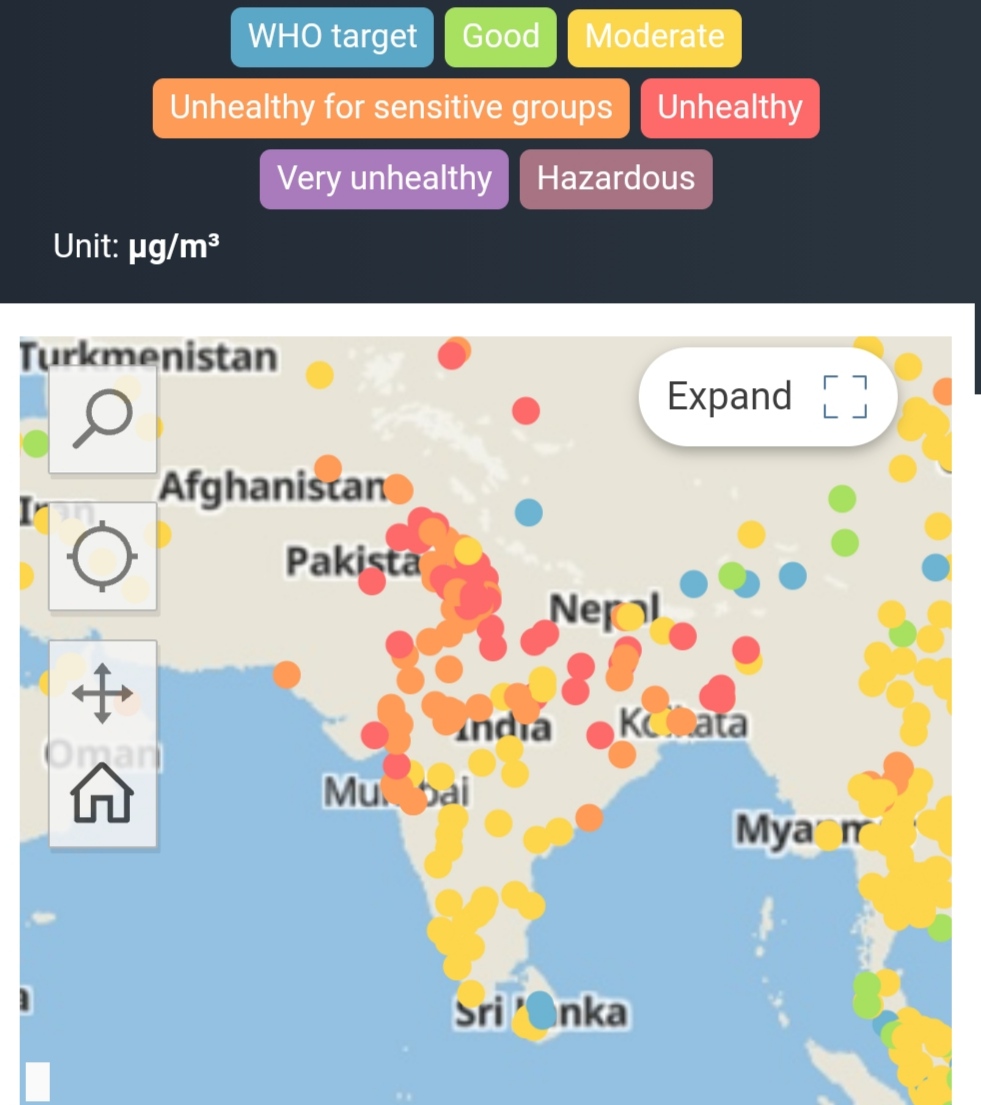It’s ironic that the more air we breathe in without a mask in Delhi, the more anorexic we may feel.
According to a recent Report published on IQAir’s global air quality data platform, also got credited in 2020 World Air Quality Report and an online interactive global map.

It has aimed to reveal the direct as well as indirect impacts of COVID-19 lockdowns and its inherent behavioral changes on global particulate pollution (PM2.5) levels.
IQAir is a Swiss air quality depicting technology firm that specialises in protection against airborne pollutants by enhancing air quality monitoring and air cleaning products.
Following were the findings for year 2020:
In total 106 countries were monitored.
Of these, about 24 could meet WHO standards for PM 2.5.
Due to strict lockdowns across the World, 84% of all monitored countries had observed air quality improvements from 2019 when compared to 2020, such percentage improvements across a few cities:
Beijing (-11%), Chicago (-13%), Delhi (-15%), London (-16%), Paris (-17%) and Seoul (-16%).
Change did appear for a while when the human grewu reclusive to exploit it’s own surroundings for the fear of contracting virus, a small entity in the whole Universe that got the world on its knees.
But Humans have been elastic, expanding their activities the moment they can break free.
Climate change continues to impact Air quality: The year 2020 has joined year 2016 as the hottest year on record.
Wildfires, ocean surface warming, sandstorms and glacial burst fueled by the warming led to extremely high pollution levels in California, South America, Siberia, Australia and South East Asia.
South Asia is the most polluted region of the world with Bangladesh, India and Pakistan sharing 42 of the 50 most polluted cities worldwide.
Opinions of Experts dealing with Air Pollution:
Frank Hammes, CEO of IQAir says: “We hope this report will highlight that urgent action is both possible and necessary to combat air pollution, which remains the world’s greatest environmental health threat.”
“While many cities recorded temporary improvements in air quality due to lockdowns, the health impact of burning fossil fuels remained severe.
To see real, long-term improvements in air quality, governments must prioritise clean energy sources such as wind and solar and promote low cost, carbon neutral and accessible transport.
Speeding up the transition to clean energy and clean transport not only saves lives, but also dramatically reduces healthcare-related costs.”
Centre for Research on Energy and Clean Air (CREA), who also contributed to the report has specifically mentioned:
“This improved air quality meant tens of thousands of avoided deaths from air pollution. By transitioning to clean energy and clean transport we can realise the same improvements in a sustained way.”
Severity specific to India:
Delhi has clutched again the title of “Most polluted capital city in the world” although India had improved its average annual PM 2.5 level.
In 2020, Delhi’s pollution level, based primarily on data from the Central Pollution Control Board(CPCB) was 84.1 µg/m³.
It indicates a 15% improvement from the 98.6 µg/m³ recorded in 2019 marked as a consequence of the lockdown.
If we categorise by cities, Hotan in China will be the most polluted city, with an average concentration of 110.2 µg/m³, followed by Ghaziabad in Uttar Pradesh at 106 µg/m³.
Of the 14 most polluted cities, 13 were in India.
Across India the average pollution levels were 51.9 µg/m³ in 2020 and 58.1 µg/m³ in 2019 respectively.
But this makes India as third most polluted country in 2020 rather than the fifth most polluted country as in 2019.
India’s immediate Neighbours, How did they fare in 2020 report?
Bangladesh and Pakistan are with even worse average PM 2.5 levels than India.
China ranked 11th falling even further from the 14th in the previous edition of the report.
Related facts for such change:
Even during the pandemic year, agricultural burning of crop residues continued. Farm fires were severe enough to pollute in 2020.
It significantly increased by 46.5% over 2019 in Punjab.
Although the air around Delhi remained comparatively clean during Lockdown.
But as the burning of crop stubble reached its zenith, Delhi’s PM2.5 levels appeared 144 micrograms per cubic metre in November and 157 micrograms per cubic metre in December, exceeding the documented World Health Organisation’s annual exposure guideline by more than 14 times.
7 million premature deaths can occur globally per year (more than three times higher than deaths associated with COVID-19) due to Air pollution.
This figure goes around 54000 deaths in India as it is one of severely vulnerable country that will continue to “exponentially” bear the brunt of climate change and subsequently Global warming, according to a joint study by Greenpeace Southeast Asia Analysis and IQAir.
In another study, there is a direct correlation between exposure to partical pollution and vulnerability to COVID-19 virus in addition to the virus’ impact on human health.
Such an Influence of Air pollution on Covid-led deaths range from 7% to 33%.
Looking at the case studies across the World, It seems Human is the only animal that fouls its own nest.



